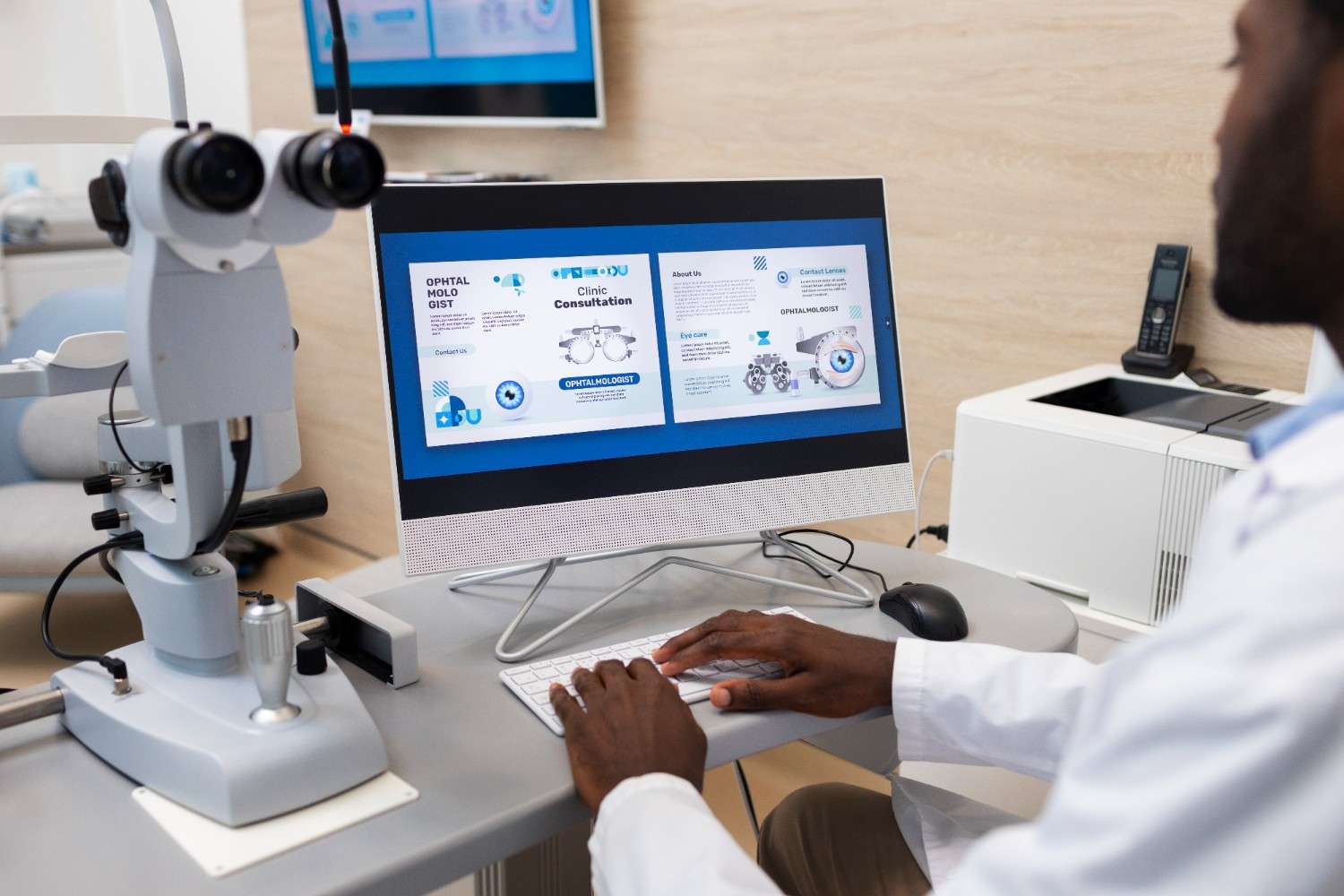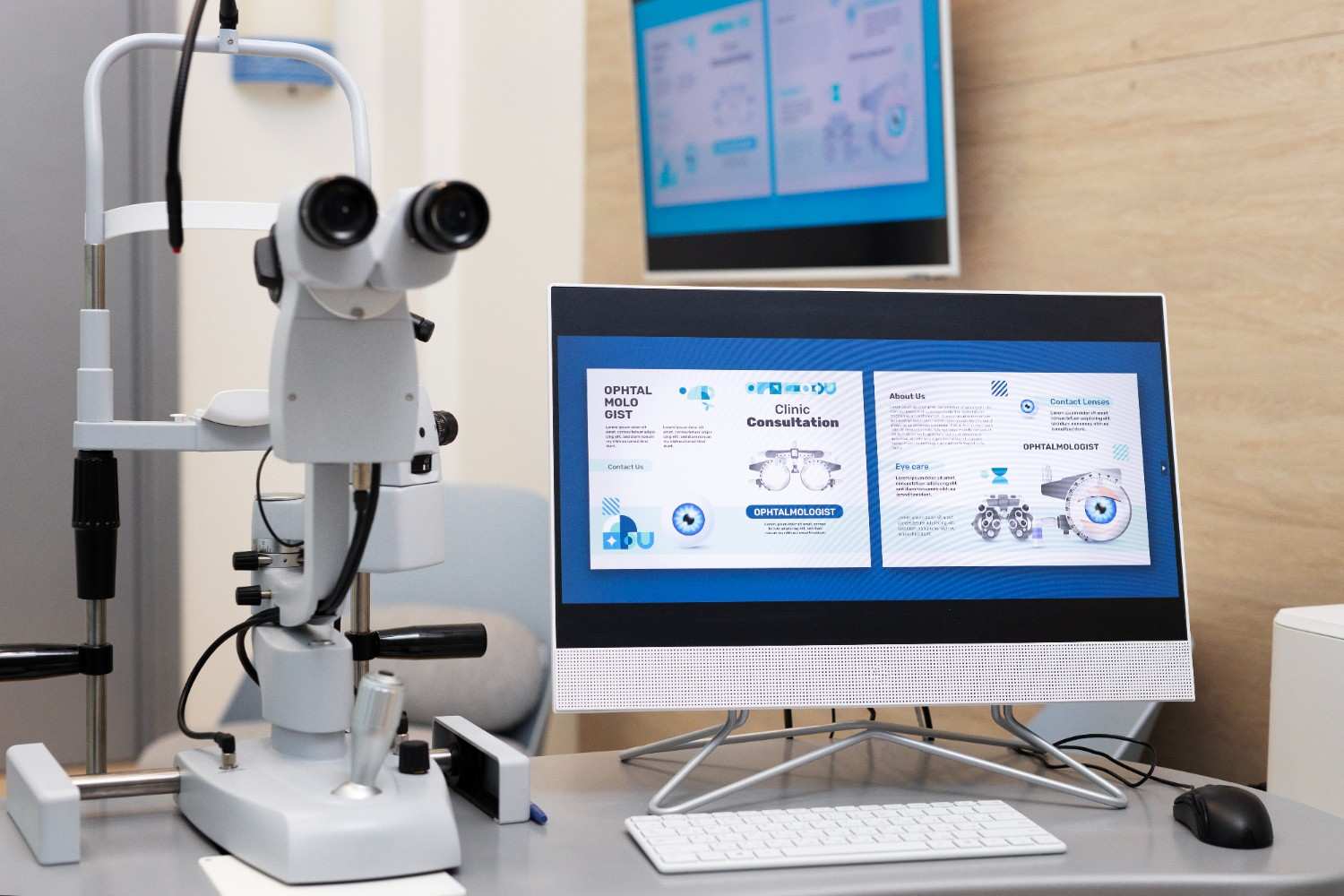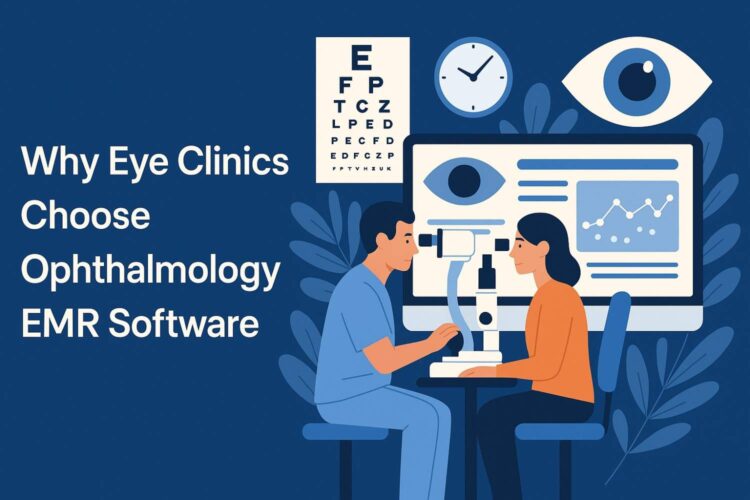Eye clinics face growing patient expectations for faster, more accurate service. With specialized diagnostic tools and treatments, traditional systems often fall short. Many clinics are turning to ophthalmology EMR software, designed specifically for eye care. Unlike generic systems, customized platforms align with the unique workflows of eye specialists, improving patient outcomes and staff efficiency. These tailored solutions offer more than convenience—they adapt to the evolving demands of the eye care industry.

Streamlining Clinical Workflows with Tailored Features
Ophthalmologists manage detailed eye exams, imaging, and patient progress. Traditional systems often create inefficiencies, leading to errors and diverting time from patient care. Tailored ophthalmology EMR software can address these issues by streamlining workflows. Key features like dedicated OCT image storage, integrated visual field data, and automated coding reduce manual data entry.
For instance, automated coding ensures accuracy and eliminates repetitive tasks, while centralized image storage simplifies access to diagnostic results. These tools reduce errors, optimize efficiency, and allow doctors to focus on patient care, enhancing operations and positioning clinics for growth.
Enhancing Patient Engagement and Satisfaction
Patients expect more from healthcare providers, including eye care. A well-designed system streamlines scheduling, record access, and follow-up reminders. Custom systems can integrate automated messages and patient portals directly into workflows, enhancing the patient experience and encouraging involvement.
When patients can securely view test results, understand treatment plans, and ask questions, they feel empowered, fostering stronger patient-provider relationships. Better engagement boosts satisfaction, keeping patients loyal and more likely to recommend the clinic.
Data Integration for Better Decision-Making
Eye care is a field that relies heavily on the synthesis of information from various diagnostic devices. Custom EMR (Electronic Medical Record) software offers a significant advantage by integrating these diverse diagnostic tools directly into the clinical workflow. This seamless integration means that data from essential instruments, such as advanced imaging machines, precise visual field analyzers, and other specialized diagnostic devices, can flow effortlessly into a single, centralized system.
This comprehensive data aggregation empowers doctors to make faster, more accurate, and more informed decisions regarding patient care. The benefits of such integration are multifaceted: it significantly saves valuable time that would otherwise be spent on manual data entry or cross-referencing, substantially reduces the chances of overlooking critical patient information, and robustly supports advanced analytical capabilities.
Future-Proofing Practices with Scalable Solutions
Healthcare technology is always evolving, and eye care clinics must be ready for future changes. A customized setup helps clinics adapt to new tools, treatments, and regulations. Scalable platforms allow technology to grow with practice, so instead of replacing systems, clinics can add modules, upgrade features, or integrate new devices as needed.
This flexibility protects long-term investments and keeps practices competitive in a fast-changing industry. Investing in adaptable systems now prepares clinics for tomorrow’s challenges, from new compliance standards to advanced diagnostics.

Conclusion
Tailored solutions are now essential in modern eye care. They streamline workflows, enhance patient engagement, support better decision-making, and help future-proof operations. Specifically, ophthalmology EMR software provides the customization clinics need to address current challenges, such as administrative burdens and data silos, while simultaneously preparing for the future of healthcare.
Practices that adopt these adaptable systems can deliver better care by focusing more on patient needs, operate more efficiently through automated processes, and build stronger patient relationships through improved communication and personalized treatment plans. Ultimately, custom setups ensure that technology genuinely enhances, rather than obstructs, the delivery of high-quality, patient-centered eye care, allowing clinics to thrive in an increasingly complex medical landscape.




